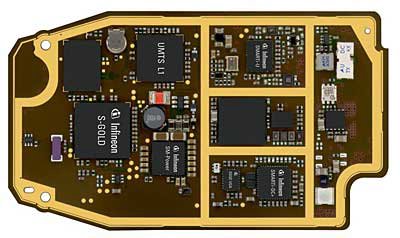Linux-Based Smartphones
FOUR COMPANIES HAVE COLLABERATED on a Linux-based 3G smartphone reference design that will be demonstrated next week at the 3GSM World Congress in Cannes, France. The production-ready platform showcases "advanced 3G" and multimedia services including UMTS/EDGE voice/video calls, video streaming, web-browsing, ultra-fast multimedia, 3D-audio, and 3D-gaming.

The hardware platform consists of a 3G smartphone reference board developed by Infineon Technologies. It features Samsung's S3C24A0 application processor and camera module, and Infineon's MP-U UMTS/EDGE modem platform.Infineon Technologies, Samsung Electronics, Trolltech, and Emuzed, who collaborated on the design, say they plan to market the hardware/software reference design to handset manufacturers that want to gain a quick foothold in the emerging UMTS/EDGE smartphone market using a Linux-based design. Support for UMTS and EDGE cellular standards gives the platform immediate access to wide mobile network coverage, and provides high bandwidth multimedia capabilities, the companies say.
Trolltech announced Monday that more than 50 companies are developing or shipping Linux-based devices using its Qtopia graphical application platform software, including more than 20 mobile phones. These successes signal "a surge in the market for handsets built on the popular open source Linux operating system," the company says.

Qtopia Phone Edition (QPE) is a version of Linux Qtopia optimized for mobile phones with smaller display screens, low memory use, and both touchscreen- and keypad-based user input. QPE is highly configurable, Trolltech says, and is designed for minimal key input. QPE includes contact manager, calendar, and task list PIM applications, games, and various productivity, messaging, telephony, multimedia, synchronization, and configuration functions.Note from DC: Regarding the embedded Linux operating system itself, there's a very clear trend. When the handset makers get serious about producing a phone, they very often go to MontaVista to have a Linux kernel customized for their hardware. If they roll their own Linux, they typically have trouble with power management and boot-up/startup time. I think that MontaVista can play a big role in helping handset makers to customize and make Linux really work on their products.






















